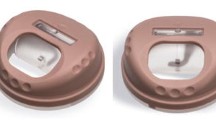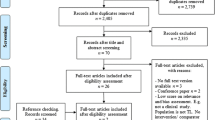Abstract
For speech rehabilitation after total laryngectomy, the Provox FreeHands Heat and Moisture Exchanger (FreeHands HME; Atos Medical AB, Hörby, Sweden) was compared with the Provox Heat and Moisture Exchanger (HME), and the patients’ Health-Related Quality of Life (HRQoL) was assessed. A review of the English literature was performed considering automatic speaking valves. The study design was a cohort study. Fourteen laryngectomized male patients who had used the HME successfully before receiving the FreeHands HME entered the study. An ENT specialist and a speech pathologist examined these patients. Data concerning voicing, breathing, skin adhesion, voice and speech quality, and HRQoL were collected by a structured questionnaire. Voice recordings were performed for evaluation of the quality of the voice. A computer-aided search of the MED-LINE database was conducted, supplemented by hand searches of key journals. Twelve patients had used the FreeHands HME on special social occasions and reported three main reasons why FreeHands HME was unsuitable for continuous use: heavier breathing, more difficult speaking, and worse subjective quality of voice. With HME, phonation time tended to be longer and the softest phonation softer ( P =0.034). The loudest phonation was louder with FreeHands HME ( P =0.015). Patients’ HRQoL assessed by the 15D profile was similar to that of the age- and sex-matched male Finnish general population (patients 0.877, population 0.884). A review of the literature showed few works dealing with automatic speaking valves. The FreeHands HME is a useful additional device in a selected group of laryngectomized patients. Total laryngectomy did not lower patients’ HRQoL notably.





Similar content being viewed by others
References
Ackerstaff AH, Hilgers FJM, Balm AJM, Tan IB (1998) Long term compliance of laryngectomized patients with a specialized pulmonary rehabilitation device, Provox Stomafilter. Laryngoscope 108:257–260
Armstrong EIK, Dooley P, Brine D, Riley N, Dentice R, King S, Khanbhai F (2001) An investigation into the quality of life of individuals after laryngectomy. Head Neck:16–24
DeSanto LW, Olsen KD, Perry WC, Rohe DE, Keith RL (1995) Quality of life after surgical treatment of cancer of the larynx. Ann Otol Rhinol Laryngol 104:763–769
Eadie TL, Doyle PC (2004) Auditory-perceptual scaling and quality of life in tracheoesophageal speakers. Laryngoscope 114:753–759
Grolman W, Schouwenburg PF, de Boer MF, Knegt PP, Spoelstra HA, Meeuwis CA (1995) First results with the Blom-Singer adjustable tracheostoma valve. ORL J Otorhinolaryngol Relat Spec 57:165–170
Harwood AR, Rawlinson E (1983) The quality of life of patients following treatment for laryngeal cancer. Int J Radiat Oncol Biol Phys 9:335–338
Hawthorne G RJ, Day NA (2001) A comparison of the Assessment of Quality of Life (AQoL) with four other generic utility instruments. Ann Med 33:358–370
Herranz JGJ (1999) Psychosocial adjustment after laryngeal cancer surgery. Ann Otol Rhinol Laryngol 108:990–997
Hilgers FJM, Ackerstaff AH, Balm AJM, Gregor RT (1996) A new heat and moisture exhanger with speech valve (Provox Stomafilter). Clin Otolaryngol 21:414–418
Hilgers FJ, Ackerstaff AH, Van As CJ, Balm AJ, Van den Brekel MW, Tan IB (2003) Development and clinical assessment of a heat and moisture exchanger with a multi-magnet automatic tracheostoma valve (Provox FreeHands HME) for vocal and pulmonary rehabilitation after total laryngectomy. Acta Otolaryngol 123:91–99
Mäkitie AA, Niemensivu R, Juvas A, Aaltonen LM, Back L, Lehtonen H (2003) Postlaryngectomy voice restoration using a voice prosthesis: a single institution’s 10-year experience. Ann Otol Rhinol Laryngol 112:1007–1010
Schuster M, Lohscheller J, Kummer P, Hoppe U, Eysholdt U, Rosanowski F (2003) Quality of life in laryngectomees after prosthetic voice restoration. Folia Phoniatr Logop 55:211–219
Schwarz C, Cirugeda M, Hagen R (2004) Tracheostoma valve with integrated cough lid for improvement of hands-free speech in laryngectomees—long term results. Laryngol Rhinol Otol (Stuttg) 83:173–179
Sintonen H (1994) The 15D-measure of health-related quality of life. I. Reliability, validity and sensitivity of its health state descriptive system. Melbourne National Centre for Health Program Evaluation
Sintonen H (1995) The 15D measure of health-related quality of life. II. Feasibility, reliability and validity of its valuation system. Working paper 42. Melbourne National Centre for Health Program Evaluation
Sintonen H (2001) The 15D instrument of health-related quality of life: properties and applications. Ann Med 33:328–336
Stavem K (1999) Reliability, validity and responsiveness of two multiattribute utility measures in patients with chronic obstructive pulmonary disease. Qual Life Res 8:45–54
Van As CJ, Hilgers FJM, Koopmans-van Beinum FJ, Ackerstaff AH (1998) The influence of stoma occlusion aspects of tracheoesophageal voice. Acta Otolaryngol (Stockh) 118:732–738
Acknowledgements
We thank the staff of the Phoniatric and Laryngological Outpatient Department, especially Pirjo Siltanen, Kirsi Käppi and Pia Laakso, for excellent technical assistance and the speech pathologists for the perceptual evaluation of voices. Annukka Valkeapää, MSc, is acknowledged for the statistical analysis. The study was supported by the Helsinki University Research Fund.
Author information
Authors and Affiliations
Corresponding author
Additional information
Some of these data were presented at the 16th Annual Meeting of the Scandinavian Society for Head and Neck Oncology, 24 April 2004, in Oulu, Finland.
Rights and permissions
About this article
Cite this article
Tervonen, H., Bäck, L., Juvas, A. et al. Automatic speaking valve in speech rehabilitation for laryngectomized patients. Eur Arch Otorhinolaryngol 262, 816–820 (2005). https://doi.org/10.1007/s00405-004-0905-y
Received:
Accepted:
Published:
Issue Date:
DOI: https://doi.org/10.1007/s00405-004-0905-y




